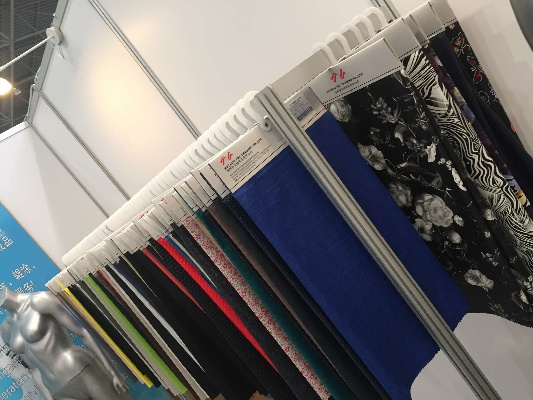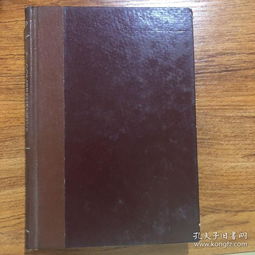The Future of Fashion:Smart Textiles Revolutionizing the Way We Dress
The future of fashion is revolutionizing with the advent of smart textiles. These innovative materials are designed to interact with electronic devices, providing users with a new level of convenience and functionality. Smart textiles can be used to create clothing that adjusts to the wearer's body temperature, moisture levels, or even mood. They can also be used to create clothing that communicates messages or alerts users to potential hazards. As technology continues to advance, we can expect to see even more exciting developments in the field of smart textiles, which will have a profound impact on how we dress and interact with the world around us.
In an era where technology is reshaping every aspect of our lives, the realm of fashion has been particularly impacted by advancements in smart textiles. These innovative materials have not only revolutionized the way we perceive clothing but also opened up a plethora of possibilities for enhancing comfort, functionality, and sustainability. In this article, we delve into what smart textiles are, their significance in the fashion industry, and how they are shaping the future of fashion.
Smart textiles refer to fabrics that incorporate electronic components such as sensors, microchips, and wireless connectivity to provide users with personalized experiences. These fabrics can sense environmental factors like temperature, humidity, or motion, adjusting their appearance or performance accordingly. They can also communicate with other devices or systems, providing users with real-time feedback on their health, fitness, or even mood.

One of the most significant applications of smart textiles is in the field of healthcare. For instance, wearable technology like smart shirts or vests can monitor vital signs such as heart rate, blood pressure, and oxygen levels. This information can be transmitted wirelessly to medical professionals, allowing for early detection and intervention in cases of illness or injury. Moreover, smart textiles can help manage chronic conditions such as diabetes or epilepsy by providing real-time data and alerts to patients and caregivers alike.
In the fashion industry, smart textiles are transforming the way we dress. With the advent of smart clothing, consumers can now access personalized recommendations based on their preferences, activity level, or even their mood. For example, a smart jacket might adjust its temperature settings based on the user's body heat, ensuring optimal comfort during outdoor activities. Additionally, smart fabrics can be used to create eco-friendly clothing that reduces waste and promotes sustainable living. By using recycled materials or incorporating biodegradable fibers, designers can create clothing that is both stylish and environmentally friendly.
Another area where smart textiles are making waves is in the realm of fashion accessories. Smart jewelry, for instance, can be worn as a fashion statement while also providing users with real-time information about their health status. For example, a necklace could display the user's heart rate or blood pressure readings, providing a glimpse into their well-being. Similarly, smart watches can be worn as part of a fashion ensemble while also serving as a device for monitoring fitness goals or managing daily tasks.
As we look towards the future, it's clear that smart textiles will continue to play an increasingly important role in shaping the fashion industry. From personalized clothing to eco-friendly accessories, these technologies promise to revolutionize the way we dress and live. As we embrace the possibilities presented by smart textiles, we must also consider the ethical implications of their use. It's essential that we prioritize fair labor practices, transparency in manufacturing processes, and responsible disposal of electronic waste.
In conclusion, smart textiles represent a fascinating intersection of technology and fashion. By harnessing the power of electronics and creating personalized experiences for users, these materials are paving the way for a more sustainable and connected future. As we continue to explore the boundaries of what's possible with smart textiles, it's crucial that we approach these innovations with care and consideration for the wider community. Only through responsible stewardship can we ensure that these technologies continue to enrich our lives and contribute positively to society.
什么是智能纺织品织物?
Smart Textiles Fabric
智能纺织品织物的特点
功能性:智能纺织品织物具有出色的功能性,能够满足各种需求,如舒适性、耐用性、环保性等,它们能够根据使用者的需求和环境条件进行自我调节,提供更好的穿着体验。
英文案例说明:
Example: Smart Textiles Fabric in Modern Clothing
Smart Textiles are used in modern clothing to enhance comfort, durability, and environmental sustainability. These fabrics are designed to adapt to the wearer's needs and environmental conditions, providing a better wearing experience.
-
舒适性:智能纺织品织物通常采用柔软、透气、吸湿排汗等特性,能够满足不同人群的需求,它们具有很好的透气性和吸湿性,能够保持穿着者的舒适度,它们还具有很好的抗皱性和抗过敏性能,使穿着更加健康和舒适。
-
环保性:随着环保意识的提高,智能纺织品织物也越来越注重环保性,它们通常采用可再生和可降解的材料,减少对环境的影响,一些智能纺织品织物还具有抗菌、防臭等特殊功能,进一步体现了环保性。

智能纺织品织物的应用领域
服装行业:智能纺织品织物广泛应用于服装行业,如运动服装、户外服装、内衣等,它们能够根据使用者的需求和环境条件进行自我调节,提供更好的穿着体验。
英文案例说明:
Example: Smart Textiles Fabric in Sports Apparel
Smart Textiles are widely used in sports apparel to enhance comfort, durability, and environmental sustainability. These fabrics are designed to adapt to the wearer's needs and environmental conditions, providing a better wearing experience. In addition, they can also help reduce the environmental impact of clothing production by using renewable and biodegradable materials.
家居用品:智能纺织品织物也可以应用于家居用品领域,如窗帘、床单、地毯等,它们能够提供更好的隔热、隔音、防潮等功能,提高家居的舒适度和环保性。
智能纺织品织物的制备过程
-
材料选择:选择具有良好透气性、吸湿性、柔软性等特性的材料作为原料,还需要考虑材料的环保性和可降解性。
-
织造工艺:采用先进的织造工艺技术,如针织、编织、热熔胶等工艺技术,将材料制成织物,还需要考虑织物的结构和性能等因素。
-
后期处理:对织物进行表面处理和整理,以提高织物的耐久性和美观度,还需要考虑织物的环保性和可降解性等因素。
智能纺织品织物的未来发展趋势
-
功能性增强:随着人们对智能纺织品的需求不断增加,未来智能纺织品织物的功能性将越来越强,能够满足更多人的需求。
-
环保性提高:随着环保意识的提高,未来智能纺织品织物的环保性将不断提高,采用更多的可再生和可降解材料。
-
创新技术应用:未来智能纺织品织物将更加注重创新技术的应用,如纳米技术、生物技术等,进一步提高织物的性能和功能。
Articles related to the knowledge points of this article:
The Art of Craftsmanship at Haimen Yamu Textiles
Stylish and Versatile Customized Textile Apron Designs for Every Occasion
The Environmental Impact of Textile Manufacturing
The Design of Textile Industries:A Multidisciplinary Approach



